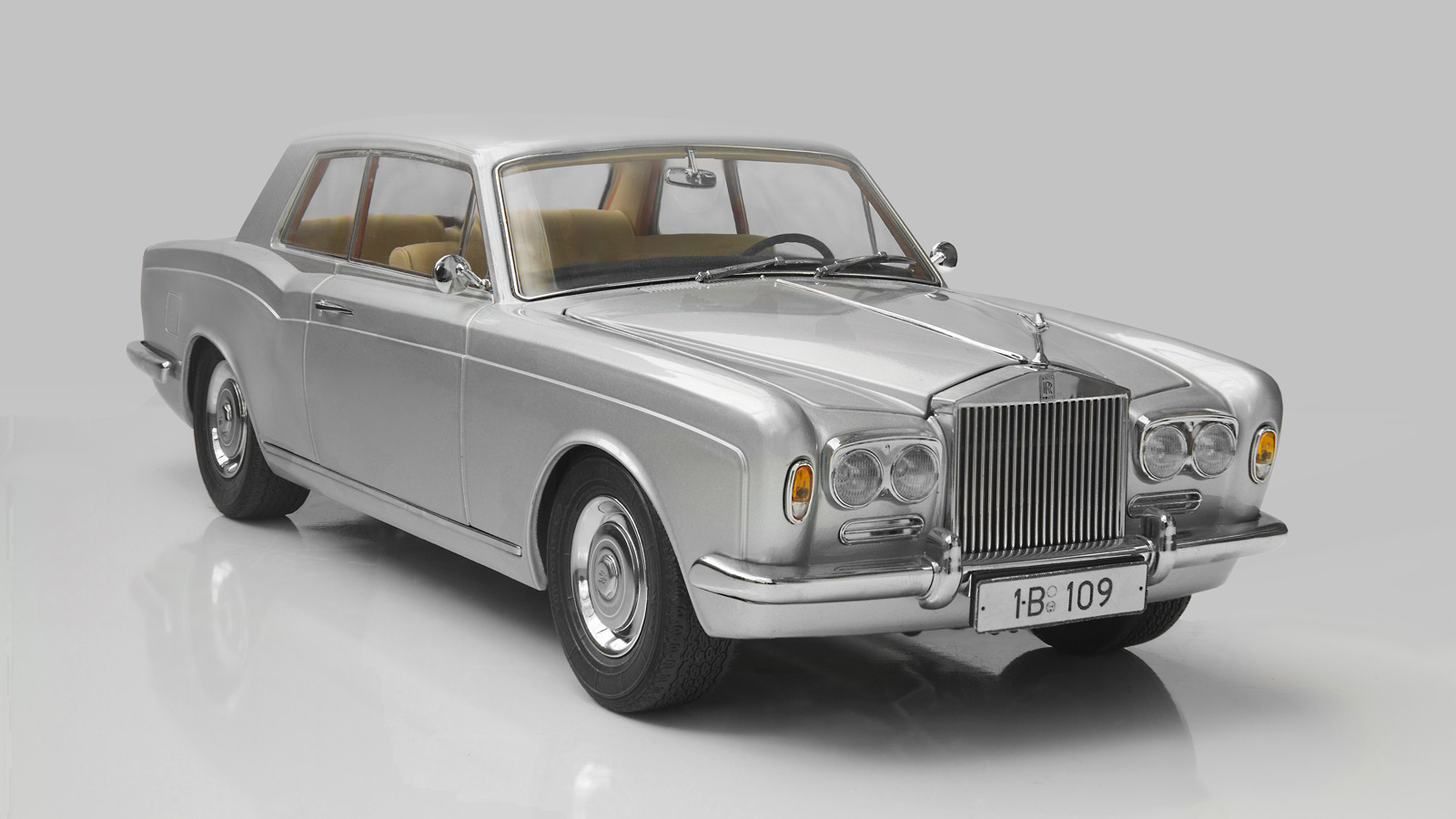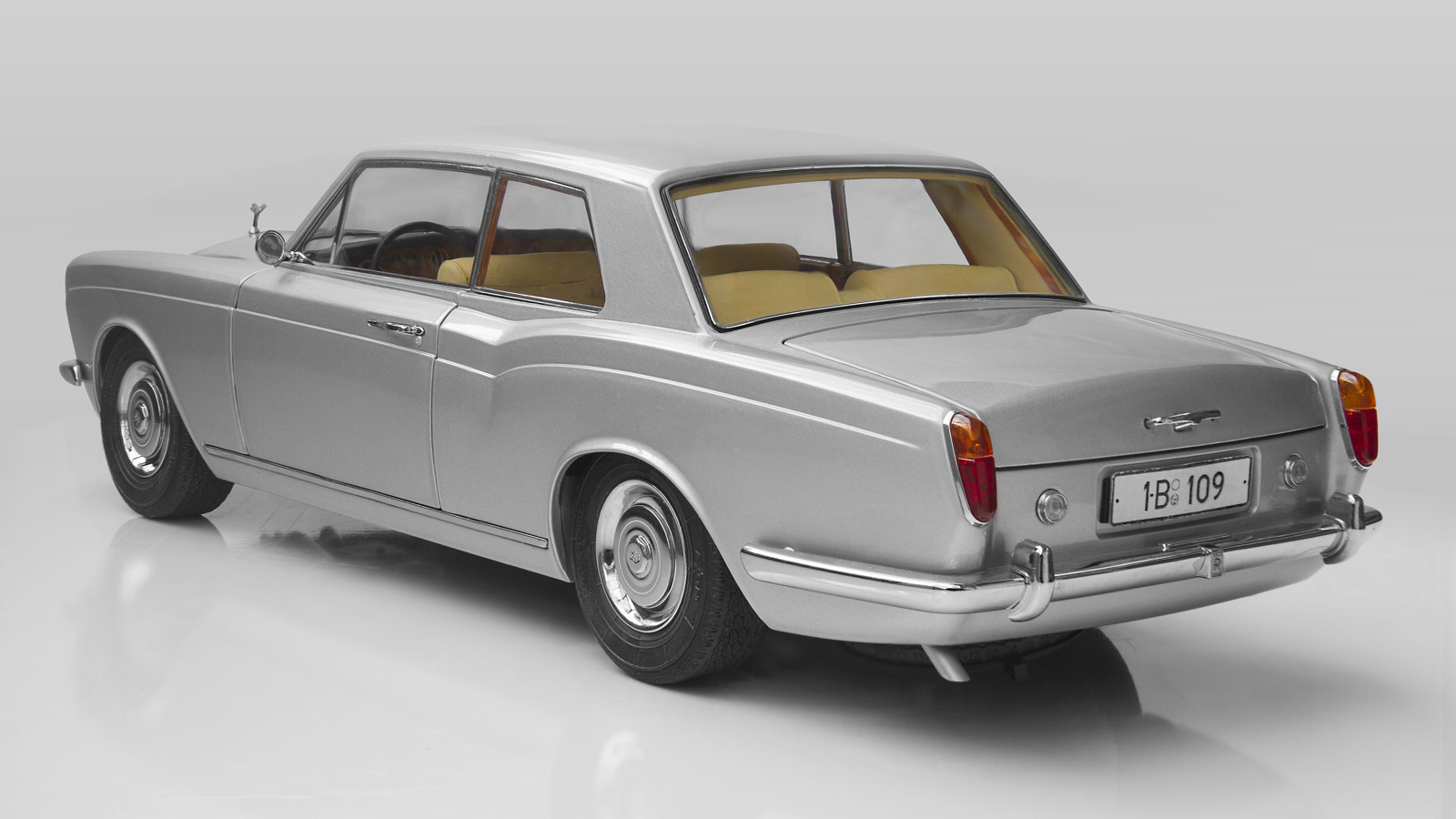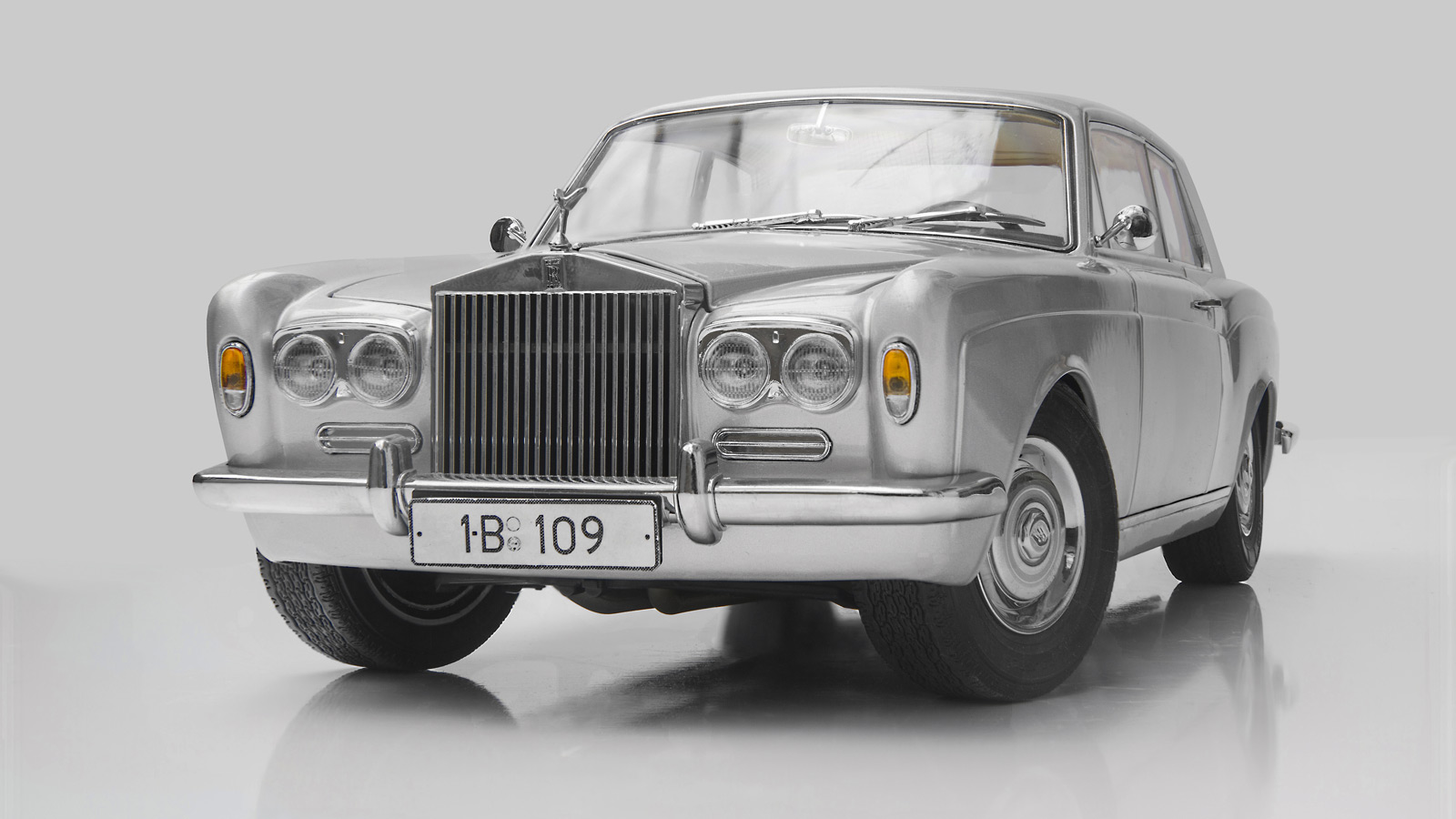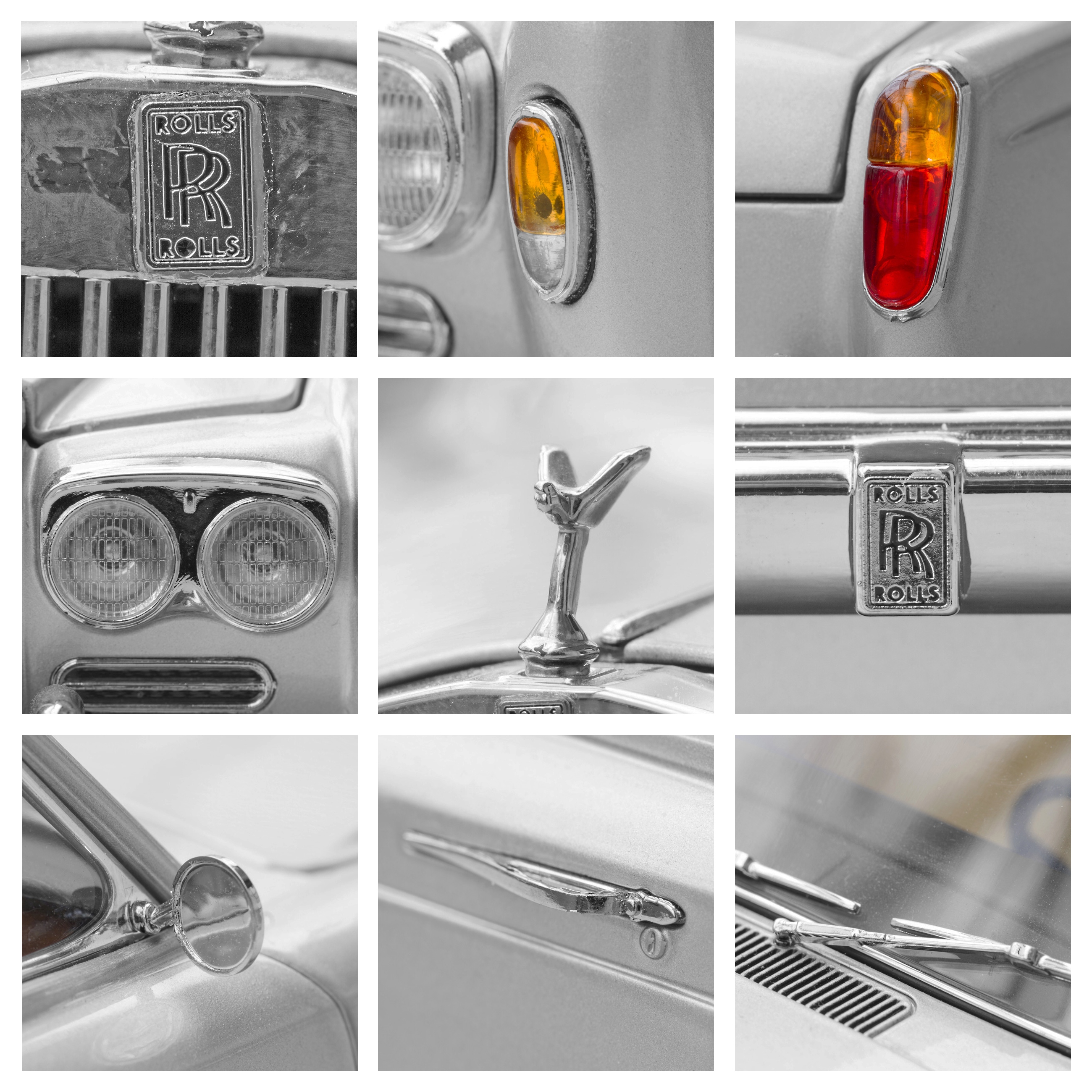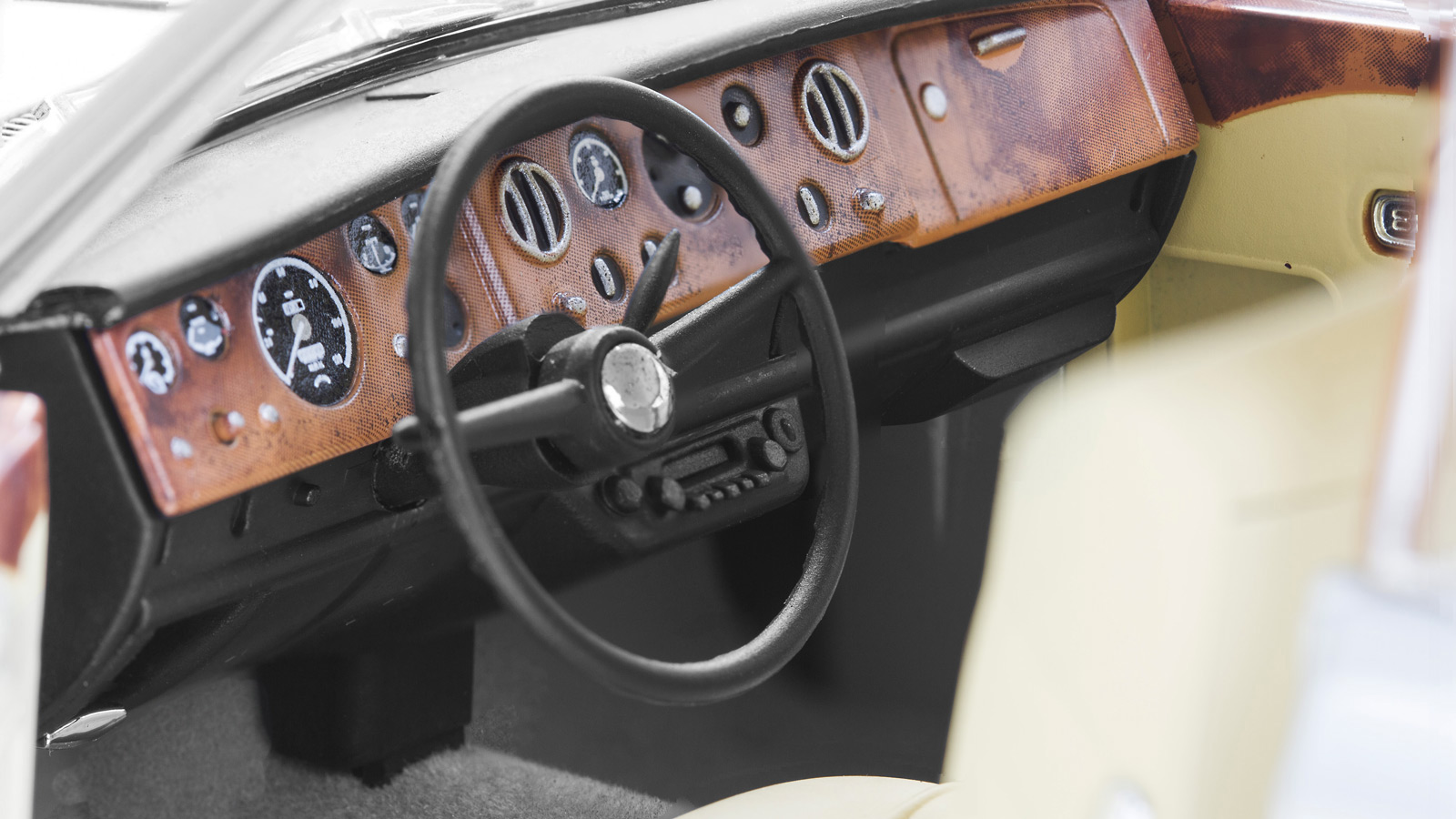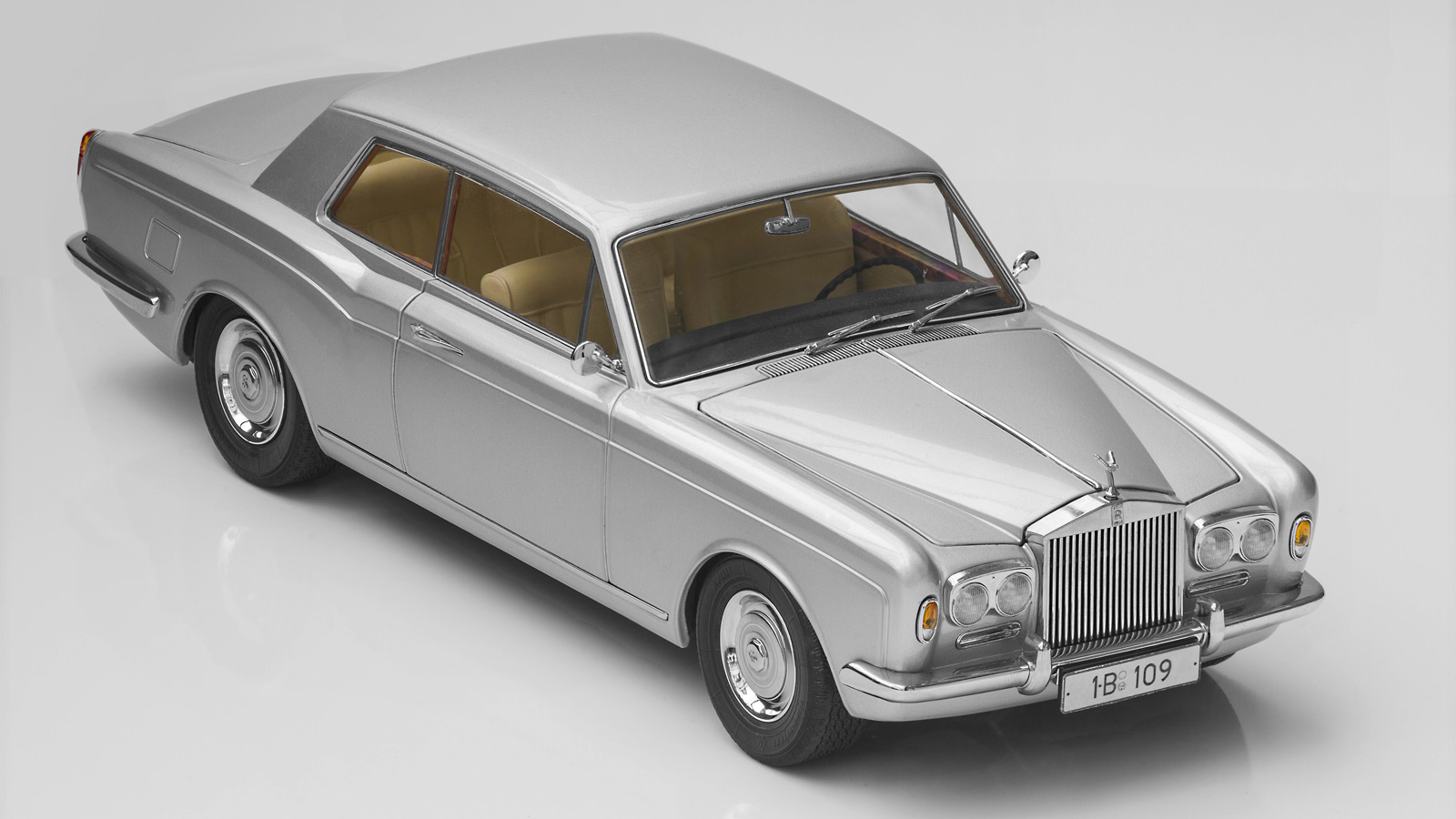Rolls Royce Silver Shadow
Paragon Models | 1968
If you are thinking about excellence in the automotive world, the first brand you’ll probably remember will be Rolls Royce. If you want to go back in time to look for the first really modern Rolls Royce vehicle, you’ll find out the Silver Shadow model.
Yes, this is the first „modern” Rolls Royce, built with a monocoque body and designed with the last comfort, technological and performance solutions available in its time. Until 1966 the „smaller” Rolls Royce was the stylish Silver Cloud, which sadly became obsolete in the middle of the 60’s. With a round body and large fenders, refusing to fit into the mainstream „boxy” design of that decade, Silver Cloud had to leave the automotive scene for a new successor, letting the bigger limousine (Phantom V, then Phantom VI) to be the last luxurious, conservative and eccentric Rolls Royce, the ultimate classic that does not obey to the passing trends.
Rolls Royce Silver Shadow 4-door saloon was presented for the first time to the Paris Motor Show in October 1965, together with its perfect twin, Bentley T model, the successor of Bentley S (which was the twin of the Silver Cloud as well). The launch was a sensation, considered as a courageous approach for a Rolls Royce car: it was the first model of the producer with a modern shape, an edged body and 3 distinct volumes. Regarding the technology, there were significant changes too – disk brakes (replacing the old-fashioned drum brakes of Silver Cloud), a Citroen-type high-pressure self-leveling hydro-pneumatic suspension system, an independent rear axle suspension. Under the hood it was the same V8 6.2 litres engine of its predecessor with 172 HP output, enough for a car slightly smaller than Silver Cloud – 9 cm narrower and 18 cm shorter. The transmission was fully automatic for all variants, the left hand drive models being fitted with a Hydramatic GM automatic gearbox.
Only few months later the coupé version – named two-door saloon – was launched, together with the convertible version called „drophead coupé”. The design of the coupé, derived from the 4-door sedan, was drawn by Mulliner Park Ward (MPW), a coachbuilder which was already a part of Rolls Royce group at that date. The coupé was built with slightly widened rear fenders, in the „coke bottle” style which vaguely ressembles the shape of a classic Coke bottle. A Rolls Royce is an exclusive car by definition, but the coupé was even more than that, many details being hand-crafted inside MPW division, significantly increasing the retail price. Therefore very few units have been built – only 369 right-hand drive examples (for the British market) and 199 left-hand drive units for export. As a little variation or more opulence, a tiny part of the coupés production was covered by James Young coachbuilder. Between 1966 and 1967 this company has built only 35 Rolls Royce units and 15 Bentley with a little different shape (non-coke-bottle).
Starting with 1971 the coupé and cabrio Silver Shadows were renamed Rolls Royce/Bentley Corniche. The Corniche line has undergone changes later, but the consecutive facelifts (the first in 1974) altered little by litle the initial elegance of the model. Until 1995 (when the production of the Corniche has ended), 1090 Rolls Royce and 69 Bentley coupés have been built (Bentley was again renamed lately as Continental from 1984). Curiously, the convertibles production was 3-times bigger: 3239 Rolls Royce units and 77 Bentley units.
Regarding the scale model, in this case we have a genuine Rolls Royce Silver Shadow Mulliner Park Ward (pre-Corniche) from 1968. Firstly presented as a mock-up at Nurnberg toys fairy in 2010, it was launched to the market one year later, being at that time the first reasonable Rolls Royce in 1/18 scale, excepting some older Bburago versions reduced to an uncertain scale (1/20 probably). It was also one of the first issues released by Paragon/Model Icon producer (who’s not in the spotlight today and who renounced to reproduce classic cars meanwhile). Surprisingly for an unknown producer at that time, the quality of the external details is very good; the model could be compared in many ways with other premium issues of that period (i.e. with some AUTOart or Minichamps models). The car is packed in styrofoam and it’s accompanied by an authenticity certificate, together in box with the external mirror and the statue „Spirit of Ecstasy” unmounted, in order to avoid potential transportation damages. Moreover, for the clumsy or unlucky collectors, the producer has doubled the mirrors and the statue with a replacement set in the package. As a first impression, the model is feeling great, it’s very heavy, with a lot of metal casted in its body – as it was in the good old times of our hobby.
The shape of the body is very good, the scale reduction is almost perfect (the length, the width and the wheelbase are 100% in 1/18 scale). Unfortunatelly, the tyres set on the model are pretty contemporary – marked in relief with „Avon” and „Turbosteel 70” texts. In the real world those are 235/70 R15 tyres, recommended for the MPW coupé versions built after 1973. The initial MPW coupé was equipped with 8.15-15 smaller tyres, an old type which has an equivalent of 205/60 R15 tyres today. Even so, the tyres of the little model are too wide, a detail which change a little the general impression. Otherwise, other external details (the mirrors, the door handles, the wipers, the radiator grille) are delicate enough to suggest a noble car as Rolls Royce. Maybe the „Spirit of the Ecstasy ” statue would have deserved to be more detailed, but we can forgive this having in mind the size (around 1 cm). We can also overlook the front signals’ visible rivets inside, as long as the main headlights do not have such an annoying detail. The gaps between the main body and the doors and hoods are decent too.
Looking inside we’ll not find the same level of precision as outside. For a luxury car, perhaps the dashboard or the replicated wood on the door inside panels would have been deserved more attention. It’s really sad that we can observe through the rear glass that the rear seat and the plate between it and the glass are in fact one single piece of plastic. The floor is of course carpeted and the steering wheel is decently sized and thin, but such details don’t level up the quality of the cabin.
The engine hood is not fully openable, it can be folded only at 45 degrees, but I suppose it’s limited in order to prevent the damage of the statue. The hood is sustained by some complicated (and also large and unaesthetic) hinges with springs (?!). Anyway, the engine compartment is not so much detailed, probably the designers have taken into account that you cannot see too much in that area. The trunk is completely flat and carpeted inside with no details (but the real car is almost similar). The spare wheel is not there, but beneath the car, mounted in the rear part of the chasis. Speaking about the chasis, it looks quite superficial; moreover, the gearbox is not mounted correctly (it appears to be 90 degrees rotated along the axis compared to how it should be positioned), but maybe it’s a particular error on this copy.
A novel detail for this car in 1/18 scale are the 2 brand badges, one of them is mounted on the radiator, the other on the rear bumper. They are very little and they’re engraved with the texts „Rolls” and… „Rolls” (instead of Rolls and Royce). Because it is hard to observe it, this particular detail is funny, making you to think about the errors printed on stamps, which are usually highly rated in terms of price than the regular ones… of course, in our case this rule does not apply. Speaking about the value, the model car is still available today (2021) in some online diecast stores around the world, and the price is about 30% higher than the original quoted price 10 years ago.
This silver model is actually an unit of the first series. Meanwhile some different color versions have been launched (dark blue, black, cognac) and more will follow soon. If you want a (diecast) classic Rolls Royce in your collection, this Silver Shadow MPW appears to be one of the most accessible variants. Exciting at first glance, improbably large, masive and heavy for a 2-door coupé, it’s really spectacular compared to other European models of its time, being similar in scale with the American cars of the ’60s and ’70s. And yet, it has such an elegant, simple and distinguished shape, that it will be a real pleasure to have a copy in your cabinet, as long as you will not study closely the interior, the engine or the chasis details.
Text și foto: Ionuț Pârjolescu | Machete 1/18

